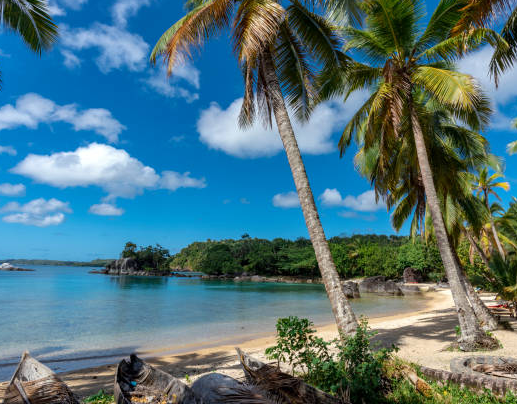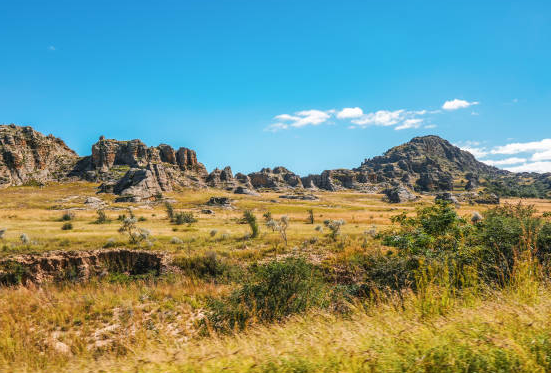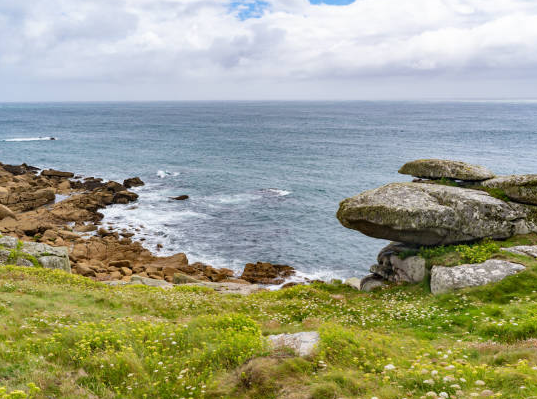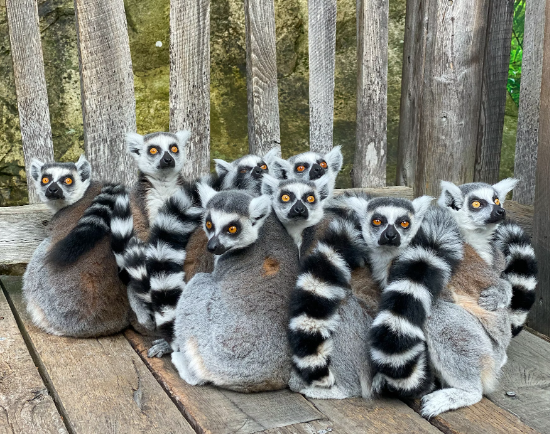Madagascar is truly unique for its music-like name, Indian Ocean atmosphere, French connections, and slightly bizarre flora and fauna. Even baobab offers a lesson in biodiversity: there is only one species on the African continent, while Madagascar has six.

This remarkable island nation is littered with precious tropical forest fragments, frogs chirping in the woods, chameleons swaying, and helmeted Vargas twinkling in the woods. Of course, the most striking are lemurs: with their cunning faces, bright eyes and fluffy fur, they are creatures that everyone wants to see. Happily, the best nature guides in Madagascar have excellent skills in finding them.
Travel Restrictions and Entry Requirements
Visitors from the UK receive a free 30-day tourist visa upon arrival at Antananarivo Ivatu International Airport. As of 2022 August 8, arriving travelers are not required to present proof of Covid-11 vaccination or test status. There are no coronavirus-related restrictions in Madagascar.
Best Time to Travel
May to November is the best and driest weather, with daytime temperatures hovering around 5-11 degrees Celsius and nighttime temperatures around 20-25 degrees Celsius; Perfect for forest walks. Arriving between September and November, you can see lemur cubs and see brightly coloured birds with breeding feathers. For humpback whale viewing near St. Mary’s Island, July and August are the best times.
If escaping the crowds is your priority, you’re not melting in the sun, and your attention is focused on the arid south (or preparing for heavy downpours farther north), the hot, quieter months of January through March are worth considering.
Popular Cities and Regions
Andascibe-Mantadia National Park
Imagine the rainforest, which surely looks like Andasibé-Mantadia: a shady green jungle overgrown with ferns, waterfalls and huge hardwood trees with vines wrapped around their branches. It takes about three hours to drive from the capital, Antananarivo, and during this journey, you can get a glimpse of the rural poverty that has led to Madagascar’s nature conservation woes. Although many hectares of forest outside the park have been cut down for fields and timber plantations, Andasibe-Mantadia is holding on. A local guide will lead you along the mottled trails in search of Sifaka, bamboo lemurs, and Indian lemurs, the howls of this large lemur that echo through the woods.
Nosybe
Filled with the scent of ylang-ylang, Noosh Beh Island (pronounced Noosh Beh) is popular with French and Italian tourists and is a beach holidaymaker’s dream for sandy beaches and palm-fringed shores. Although the hotels here are more concentrated than anywhere else in Madagascar, it has not lost its character. During the four-day Donia Festival in May or June, the island is at its liveliest and local bands perform. The Lokbe Sanctuary is also home to rat lemurs, dragon-banded lizards and other rainforest creatures.
Isaro National Park
Isalo National Park is a destination for tourists who reach Tulaire in southwestern Madagascar overland from Antananarivo, and is dotted with fascinating hiking trails through the immense landscape of the Jurassic era. Striking rock formations dot the plateau’s sandstone cliffs and gorges, apparently formed by giants. Despite relatively little rainfall, streams gurgle through the park, filling swimming holes and sustaining the growth of fire-resistant palm trees.

Allée des Baobabs and Kirindy Private Reserve
Murondava’s famous baobab avenue is very photogenic and an icon of Madagascar, as is the mysterious nest, an elusive short-haired mammal that is related to the mongoose but looks like a hybrid breed of cat and dog; Fans of Madagascar movies know that they are the evil enemies of King Julian. You can track them down in the dry deciduous forest of the Kirindi Sanctuary, where giant jerboas and pygmy mouse lemurs have also been spotted.
Berenti Private Reserve
If you want to take close-up photos of Madagascar’s liveliest and eccentric primates, head to Berenti. Ring-tailed lemurs frolic along the sidewalks and the grounds of this historic primate research center, with curious expressions, long stripes on their tails, and the Vero lemur, a silly lemur with a fluttering gait. It’s not the most natural environment, but it’s a charming place to spend time.
The Best Off-the-Beaten-Path Destination
Masuara National Park
Located in the northwest of Madagascar, Masuara National Park is extremely remote, but well worth the effort to get here, a vast coastal rainforest teeming with life on top of trees. Hide yourself in a delightful little ecolodge where you can design your own mini adventure – kayak down a quiet creek with prepared bird books, or spot a chameleon among the hanging leaves on the beach. With a nature guide, you can go deep into the forest during the day or (better) after dark to get up close and personal with red-collared lemurs, lizards, and frogs.
Saint Mary’s Island
The unspoiled island of St. Mary, also known as Boraha Island, is much quieter than Nosybe with only a few places to stay, and was a refuge for pirates in the 17th and 18th centuries. It is now better known as a whale sanctuary: every late June, migratory humpback whales arrive from Antarctica to raise their cubs in the calm waters between Sainte-Marie and the mainland of Madagascar. Local conservation organization Cétamada, which works with marine biologists to protect whales and their habitats, can advise on how to watch whales by boat without harming them.

Chinji de Bemalaha
The large streaks of grey limestone karst pinnacles, needle-like structures, fissures and caves found in northwestern Madagascar are eerie but exceptionally beautiful and have been inscribed on the UNESCO World Heritage List. They are called “tsingy”, which aptly means “place where you can’t walk”, but locals have solved this problem by building steps, trails, rope bridges and walkways to allow fit, agile hikers to pass the spikes. Stone maze. Perhaps unexpectedly, lemurs and hairy lemurs barely survive here, along with many birds, including the button-button quail and harrier endemic to Madagascar.
Best Thing to Do
Observe lemurs
Malagasy primates have evolved independently for more than 6000 million years, so long that they bear little resemblance to monkeys, apes and humans. They mostly live in forests and, sadly, their habitat has shrunk to isolated small areas due to rampant logging. One of the best ways to reverse this trend is to visit national parks and community reserves as paid eco-tourists. There are over 100 species waiting to be discovered. On a guided forest hike, you’re sure to spot some jumping in the woods or gazing charmingly into the distance.
Nature walks at night
If you feel palpitations at the thought of walking through a tropical forest after dark, relax: Madagascar is a magical place where there are no dangerous animals at all. Muster the courage, pick up the torch and follow your guide: your reward will be a glimpse of the secret world. Scanning the trees for gaze and listening to the call, you may encounter dwarf lemurs, comet moths, horned owls, and perhaps the dramatically named evil leaf-tailed gecko. Fascinatingly, you’ll also see birds nestled perched on tree branches; A conscientious guide will make sure you don’t disturb them.

Travel
Madagascar is the second largest island nation in the world and has an extremely diverse landscape. Many visitors book guided tours of the sights including transportation, but it is also possible to travel alone.
Due to the long distances and the poor condition of many of Madagascar’s rural roads, the best way to cover multiple areas is with Madagascar Airlines. Unfortunately, they are notoriously unreliable, changing flight times and dates with little notice; Prepare accordingly.
On the ground, public transport tends to be unstable and congested, so hiring a taxi for short trips, as well as hiring a vehicle with a driver/guide for long trips, is a good investment.
With their white sand beaches and pristine waters, the islands around Madagascar are a beach holiday’s dream.
